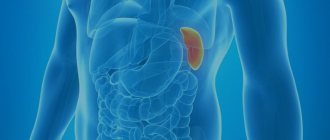The first symptoms of laryngotracheitis, treatment regimen and prevention rules
Laryngotracheitis in adults is a rather serious infectious disease. Its danger lies in the fact that the infection affects the trachea and pharynx.
This disease occurs if an adult has a severely weakened immune system. Laryngotracheitis in adults most often develops against the background of a severe cold. They say that most often laryngotracheitis occurs in those people whose work is related to public speaking - teachers, lecturers, TV presenters.
Causes of acute laryngotracheitis
There are many reasons and prerequisites for the occurrence of acute laryngotracheitis. Almost always it is of an infectious, viral or bacterial nature.
Acute laryngotracheitis is observed in the following diseases:
- Parainfluenza;
- Flu;
- Adenoviral infection;
- ARVI and acute respiratory infections;
- Chlamydial infection;
- Staphylococcal infection;
- Chickenpox;
- Scarlet fever;
- Measles;
- Rubella;
- Syphilis;
- Mycoplasmosis;
- Streptococcal infection;
- Tuberculosis of the larynx;
- Pneumococcal infection.
Laryngotracheitis occurs with the above types of diseases in case of weakened immunity in general. Sometimes only the larynx or only the trachea may be affected. There are cases of acute laryngotracheitis for other reasons. Thus, the prerequisites for the disease may be allergic reactions of the body or the aggressiveness of chemicals. Herpes lesions of the respiratory system occur, causing acute laryngotracheitis.
General information
Laryngotracheitis (ICD-10 code J04.2/J37.1) is an inflammatory combined disease of the larynx and trachea of infectious-allergic origin, caused by an infectious agent of a viral or bacterial nature, occurring in acute or chronic form.
Of particular importance is acute laryngotracheitis (ICD-10 code J04.2) and especially its variety - acute stenosing laryngotracheitis (synonyms - false croup, acute obstruction of the respiratory tract), which is characterized by broncho-obstructive syndrome (narrowing of the lumen of the larynx), accompanied by respiratory disorders and development symptoms of acute respiratory failure. It is important to understand that acute stenosing laryngotracheitis is an emergency condition that requires clear diagnosis and emergency treatment already at the prehospital stage. Acute stenosing laryngotracheitis (ASLT) is an extremely pressing problem in childhood, due to its high prevalence, pronounced dynamics of clinical symptoms, high risk of developing bacterial complications over a short period of time and death. In the last decade, there has been a sharp increase in the incidence of respiratory viral infections, which are accompanied by obstruction of the respiratory tract and the largest share falls on stenosing laryngotracheitis. Moreover, at the moment, a distinctive trend in the course of OSLT is its tendency to relapse with the possibility of transformation into bronchial asthma.
The frequency of OSLT is directly proportional to the epidemic situation regarding the incidence of ARVI. Symptoms of laryngotracheitis occur in almost 50% of patients with ARVI, and among this group, about 70% of cases show symptoms of progressive laryngeal stenosis. The peak incidence occurs in the autumn–winter period.
The incidence of acute laryngotracheitis, especially those accompanied by acute airway obstruction, among adults is significantly lower than in children. The prevalence of OSLT in different age periods varies significantly: in children 2-3 years of age, OSLT develops in more than 50% of patients with ARVI, in infancy (6-12 months) and in the 4th year of life it occurs in 34% and is quite rare in children over 5 years old. Most children with OSLT recover without specific treatment, but almost 15% of patients require hospitalization, and 5% of them require intubation. Boys get sick more often than girls (ratio 1.5/1).
Classification
There are three forms of the disease:
- catarrhal, in which redness and some swelling occurs in the area of the vocal cords and trachea.
- atrophic, gradual atrophy occurs in the area of the mucous membrane, due to which it loses its protective properties and becomes inflamed. Often occurs among smokers and coal mine workers, people working in dusty areas.
- hyperplastic, the growth of areas or the entire mucosal zone in the trachea and larynx is manifested, as a result breathing and voice suffer.
There are acute and chronic laryngotracheitis. Acute laryngotracheitis is divided into
- primary, which is detected for the first time,
- recurrent, occurring repeatedly, due to the occurrence of colds or the influence of unfavorable factors.
Primary acute laryngotracheitis can have three course options:
- acutely occurring, against the background of an existing acute respiratory infection,
- sudden laryngotracheitis without signs of acute respiratory infections,
- gradually arising as a complication of colds.
The course of acute laryngotracheitis can be continuous or wavy.
Chronic laryngotracheitis occurs when acute treatment is improper or in the absence of treatment. Often occurs due to professional overstrain of the ligaments.
Signs
Acute laryngotracheitis in children and adults is manifested by the following symptoms:
- symptoms of general intoxication are clearly expressed;
- the throat is sore, which provokes a cough;
- barking cough (especially pronounced in a child);
- sore throat;
- voice changes. He becomes rough and hoarse. In more severe cases, aphonia is observed;
- respiratory dysfunction. A child or adult experiences wheezing, noise, and shortness of breath;
- increase in body temperature. Usually the readings do not exceed 38 degrees, but there are times when the temperature can rise to high numbers.
List of sources
- Blokhin B.M. Principles of providing emergency and emergency prehospital care to children and adolescents.
- Pediatrics. National leadership under. ed. A. A. Baranova - 2009.
- Zaitseva O.V. Croup syndrome in ARVI: modern aspects of therapy. //Emergency medicine. — 2006.-5(6)
- Clinic and diagnosis of acute stenosing laryngotracheitis in children with ARVI of various etiologies / V. F. Sukhovetskaya et al. // Children's infections. - 2004. - No. 1. - P. 10-15.
- Volosovets A.P., Krivopustov S.P. Modern approaches to the diagnosis and treatment of acute stenosing laryngotracheitis in children // Health of Ukraine. – 2007. – No. 18/1. – pp. 26-27.
- Karavaev V.E., Orlova S.N., Alenina T.M. Stenosing laryngotacheitis in children with acute respiratory diseases (clinic, diagnosis, treatment). Ivanovo, 2006.- 55 p.
Symptoms of acute laryngotracheitis
Acute laryngotracheitis is characterized by a rapid increase in symptoms. The severity of symptoms depends on the degree of damage to the tissues of the larynx and trachea.
- Infiltrative-purulent or phlegmonous laryngotracheitis, which is characterized by damage to the underlying layers of the mucosa, muscles, cartilage, is characterized by a rise in temperature to 38C - 39C.
- Catarrhal laryngotracheitis, which is characterized by damage to the internal mucous membrane and the release of mucous discharge, is characterized by a satisfactory condition of the patient, normal or slightly elevated temperature.
Acute laryngotracheitis is accompanied by severe pain in the throat and difficulty when trying to take a sip of liquid. The patient loses his appetite, he experiences increased symptoms of intoxication, and his overall condition worsens significantly.
Also characteristic symptoms of laryngotracheitis are changes in voice. It becomes hoarse, rough, and loses sonority. Laryngotracheitis is accompanied by a dry, barking cough, more often in the morning and at night. After a coughing attack, the patient feels pain in the chest. A cough can be triggered by taking a deep breath, laughing, or inhaling cold, polluted air. At first, the cough is dry, without phlegm. As the disease progresses, the cough is softened by the appearance of sputum. Over time, the sputum becomes mucopurulent and profuse. At the same time, pain, sore throat, and constant discomfort when swallowing are noted. Painful sensations occur when trying to talk, while exhaling, while inhaling. All changes are accompanied by a deterioration in general well-being.
A serious danger with laryngotracheitis is laryngeal stenosis. With this phenomenon, the access of air to the lungs is completely or largely stopped as a result of severe narrowing of the larynx.
Forms of chronic laryngitis
Depending on changes in tissues, chronic laryngitis is divided into several forms1:
- Catarrhal form.
The most favorable and most common variant of the course of the disease. It is accompanied by a moderate clinical picture, hyperemia of the mucous membrane - the blood vessels are filled with blood. The main symptoms of the catarrhal form are associated with persistent hoarseness, incessant cough with sputum production. The most difficult period of the disease occurs in the morning. - Hyperplastic form.
Severe hoarseness of varying levels appears, the mucous membrane acquires a blue-red color. A characteristic sign of hyperplastic changes is thickening of the vocal cords and the appearance of nodules. This form is classified as precancerous processes. The hyperplastic form also includes dangerous forms of laryngitis - recurrent respiratory papillomatosis and Reinke's edema3. - Atrophic form.
Long-term laryngitis. Accompanied by depletion of the tissues of the larynx, pharynx, and nasal cavity. In addition to coughing, sputum appears, sometimes with bloody streaks. The main symptoms of the atrophic form are constant soreness and dry throat. Mucus often appears on the surface of the larynx, which leads to the formation of crusts.
Symptoms of chronic laryngotracheitis
Particular attention should be paid to cough. If in the acute form of laryngotracheitis it is episodic and paroxysmal, then in the chronic form of this pathology the cough is permanent. Moreover, the patient constantly experiences a feeling of discomfort in the pharynx and trachea, as well as frequent painful sensations behind the sternum. A constant persistent feeling that the throat is scratched, dry mouth, painful swallowing - this is an incomplete list of manifestations of chronic laryngotracheitis.
The most characteristic diagnostic sign is dysphonia or disturbances in the patient's voice function. Dysphonia can vary in intensity from mild “hoarseness” to complete inability to speak. Attempts to make sounds cause discomfort to the patient. This condition can be aggravated by certain climatic factors or various hormonal changes. Particularly severe forms of dysphonia occur in women during menopause, during pregnancy or during menstruation. This condition can be either periodic or permanent.
Persistent dysphonia indicates various morphological changes in the structures of the vocal cords. If the patient’s professional activity involves the need to constantly communicate and be in public, the slightest changes in voice timbre can become a psychologically traumatic factor for them. As a result of this, the patient’s psychosomatic state is disrupted: sleep dysfunction, constant nervous tension, depression or neurasthenia.
Symptoms of bronchial asthma
Translated from Greek, “shortness of breath” or “to suffocate” sounds like “asthma,” which accurately describes the most characteristic symptom of this disease - difficult, spasmodic breathing.
BA has the following clinical manifestations:
- episodic shortness of breath;
- attacks of suffocation;
- paroxysmal cough;
- feeling of tightness in the chest;
- wheezing (“wheezing”);
- wheezing;
- shortened, difficult exhalation.
The described symptoms occur during attacks, which occur most often at night or in the early morning hours. But they can also appear within a day, especially under the influence of provoking factors - allergens, physical activity, stress.
Asthma symptoms are variable, meaning they can change in nature and intensity over time.
The disease has periods of exacerbations and remissions, which occur in two types. In the first case, the disease does not manifest itself in any way, in the second there is a so-called cough variant. As the name suggests, the patient has a slight but persistent cough producing a small amount of sputum.
Although the mortality rate from asthma is not very high, a severe, uncontrollable attack requires hospitalization of the patient or even placement in the intensive care unit.
First aid
With laryngotracheitis, it is very important to provide assistance to the sick person even before a medical visit. And the point here is not only in the own symptoms of the disease, but also in the peculiar psychological stress that manifests itself in the sick person, especially in a child.
- It is necessary to reassure the patient, since his increased excitement can provoke an increase in frequency and deepening of spasmodic attacks.
- Be sure to provide fresh air into the room.
- In case of acute laryngospasm causing suffocation, urgently induce a gag reflex using an accessible method (for example, by pressing on the root of the tongue).
- Give the patient a warm drink - milk, dried fruit compote, mineral water, preferably a slightly alkaline one. You can add a pinch of baking soda to the milk - this is very helpful in narrowing the larynx.
- The humidity in the room where the sick person is located should be high.
- Warm foot baths (water temperature - 38-40 degrees) help relieve acute attacks. However, they cannot be done against the background of elevated body temperature.
Publications in the media
Croup is an acute laryngitis or laryngotracheitis that occurs in certain infectious diseases, accompanied by laryngeal stenosis with hoarseness, barking cough and shortness of breath, often of an inspiratory nature.
Etiology and epidemiology • The most common cause of croup (laryngitis) is viruses that cause respiratory infections (influenza viruses, parainfluenza, adenoviruses), less often - measles viruses, viruses of the Herpesviridae family and diphtheria bacillus • The mechanism and routes of transmission of the pathogen are determined by the epidemiological features of the underlying infectious disease • The most frequently affected age group is children aged 6 months to 3 years; The development of croup in adults is a rare phenomenon and is usually associated with respiratory tract diphtheria.
Clinical and pathogenetic characteristics • Croup is an infectious disease syndrome that always implies the presence of stenosing laryngotracheitis • The syndrome is formed in diseases manifested by the development of an acute inflammatory process in the mucous membrane of the larynx and trachea. Therefore, the concept of “croup” is applicable only to infectious diseases and cannot be used in another context • The phenomenon of narrowing of the lumen of the upper respiratory tract during croup is formed sequentially (in stages) and is directly related to the reaction of laryngeal tissue to an infectious agent. The final stage is asphyxia. Its causes: complete obstruction of the upper respiratory tract by edematous tissues of the mucous membrane and accumulated sputum, as well as reflex spasm of the muscles of the larynx • When assessing the clinical picture, it is necessary to take into account the prevalence of edema of the inflamed mucous membrane, hypersecretion of mucus or spasm of the muscles of the larynx and trachea , since this is fundamental when choosing tactics treatment • Croup is divided into true and false depending on the damage to the structures of the larynx (this classification is arbitrary, since the mucous membrane of the larynx along its entire length is often involved in the process, but such a division still exists in the domestic literature) •• True croup develops as a result of damage to the true vocal cords (folds); the only example of true croup is diphtheria of the respiratory tract (diphtheria croup), which forms specific fibrinous changes mainly on the mucous membrane of the vocal cords •• False croup includes all stenosing laryngitis of a non-diphtheria nature, in which the inflammatory process is localized mainly on the mucous membrane of the subglottic (subglottic) area of the larynx .
Classification • According to the etiology of the underlying disease: viral or bacterial • According to the stage of croup (larynx stenosis): •• compensated; •• incomplete compensation (subcompensated); •• decompensated (uncompensated); •• terminal (asphyxia) • By the nature of the course: •• uncomplicated; •• complicated (manifestation of a mixed infection due to the addition of a secondary bacterial purulent infection to the main process) • With the development of true (diphtheria) croup, the nature of the spread of the inflammatory process is taken into account (spread to the mucous membrane of the trachea, bronchi and bronchioles is possible - the so-called widespread, or descending, croup) • The clinical symptom complex of croup may recur in some patients (for example, with herpetic respiratory tract infection in patients with immunodeficiency conditions), therefore, in separate classifications, it is assumed that primary and recurrent forms of the syndrome should be taken into account.
Clinical picture.
• Noisy breathing is a classic sign recorded in all clinical types of croup. At rest, it is detected already from the stage of subcompensated laryngeal stenosis. With dynamic narrowing of the lumen of the respiratory tract, normally silent breathing receives sound accompaniment (due to vibrations of the epiglottis, arytenoid cartilages, and partly the vocal cords). As stenosis increases due to a decrease in tidal volume, the sound of breathing will decrease. If swelling of the laryngeal tissues dominates, a whistling tone of sound will appear; with increasing hypersecretion, a hoarse, bubbling component of noisy breathing will appear; with a pronounced spastic component, instability of sound characteristics will appear.
• Shortness of breath is a mandatory symptom. With compensated croup, shortness of breath is usually inspiratory; with decompensated croup, it is of a mixed nature. Decompensation of croup is accompanied by a narrowing of the lumen of the airways at the level of the underlying sections, which leads to a change in the nature of shortness of breath •• Forced breathing through the narrowed airways takes place with the participation of auxiliary respiratory muscles •• Rapid breathing and increased body temperature with croup can contribute to significant loss of fluid and the development respiratory exicosis.
• Voice changes (dysphonia) are associated with inflammatory changes in the vocal cords. A fundamentally important diagnostic sign is a decrease in the pitch of sound (up to aphonia), reflecting the severity of edema of the affected mucous membrane of the larynx. The hypersecretory component of inflammation is manifested by hoarseness of the voice, and muscle spasm is manifested by a dynamic, over a short period of time, nature of changes (from ringing notes to complete aphonia).
• A rough barking cough is associated with incomplete opening of the glottis (mainly due to spasm) and the addition of phonation phenomena. The loudness of the cough depends on the severity of edema (the greater the edema, the quieter the cough), frequency and productivity - on the activity of sputum hypersecretion processes.
• Determination of croup stage.
•• With stage I croup (compensated croup), there should not be the following symptoms: ••• shortness of breath of a mixed nature; ••• aphonia; ••• constant participation of auxiliary muscles in the act of breathing; ••• respiratory exicosis; ••• microcirculatory disorders.
•• With stage III croup (uncompensated croup), all of the above symptoms are present, and also possible disorders of central hemodynamics, cerebral disorders, persistent hyperthermia, weak nonproductive cough (lack of cough drainage of sputum), hemorrhagic syndrome, laboratory signs of hypoxia.
•• In all other cases, it makes sense to talk about partially compensated (subcompensated) croup of stage II.
•• Assessment of the severity of the patient's condition at the time of observation also suggests a possible intermediate or interstage state, when the symptom complex does not fit into the described clinical picture of a specific stage of stenosis. From a therapeutic point of view, it is advisable to establish a diagnosis of the highest stage of croup in a given situation.
• Criteria for severity of croup.
•• When making a diagnosis, the severity of croup is determined, and not the severity or degree of stenosis, since the assessment of the latter is possible only with a qualified specialist’s opinion after direct laryngoscopy (which is not always possible in an outpatient setting or an infectious diseases hospital). The patient's death may occur as a result of asphyxia from prolonged spasm of the laryngeal muscles during croup. In such cases, the cadaver section may show little or no laryngeal stenosis.
•• In a comprehensive assessment of the patient's condition to determine the severity of croup, the following factors are taken into account: ••• the work of the respiratory muscles, the participation of auxiliary respiratory muscles (neck, chest, intercostal muscles) in the act of breathing - evidence of a significant narrowing of the lumen of the respiratory tract; ••• respiratory and cardiovascular failure, depression of consciousness, persistent hyperthermia.
TREATMENT
• Patients with compensated forms of croup are subject to hospitalization in the acute care departments of somatic and infectious diseases hospitals. Treatment of patients with subcompensated and decompensated variants of the syndrome is carried out in specialized departments under the supervision of a resuscitator and otolaryngologist.
• The air temperature in the rooms where patients are treated should not exceed 18 °C.
• Etiotropic therapy is effective only for true croup: administration of anti-diphtheria serum IM or IV.
• Antibiotics - for diphtheria croup and croup complicated by secondary bacterial purulent infection, viral croup, as well as for the so-called late viral croup, the clinical picture of which develops after the 5th day from the onset of the viral infection.
• Inhalation therapy is an obligatory component of the treatment of compensated croup with intact cough drainage (used with caution in cases of severe swelling of the laryngeal mucosa and complicated forms of croup): steam inhalation of distilled water, 0.9% sodium chloride solution.
• GK, for example prednisolone at a dose of 3–10 mg/kg, when laryngeal edema predominates in the clinical picture. The duration of treatment (on average up to 2–3 days) is determined by the effectiveness of the first dose. It is possible to use steroid drugs using a metered dose inhaler.
• Antihistamines - for concomitant allergic manifestations (used with caution in cases of pronounced hypersecretory component of inflammation).
• Antispasmodics are a mandatory addition to GK and sedatives.
• Psychosedatives (tranquilizers, antipsychotics) - with severe spasm of the laryngeal muscles. For routine treatment of spastic symptoms, tranquilizers are used.
• Intubation and tracheostomy are indicated when conservative therapy is ineffective and during resuscitation measures (asphyxia, clinical death).
ICD-10 • J05 Acute obstructive laryngitis [croup] and epiglottitis • A36.2 Diphtheria of the larynx.
Diagnostics
The diagnosis is made based on the results of studying the patient’s complaints, examining him and conducting some research. To determine the disease, you may need the following:
- examination of secretions released from the respiratory tract;
- results of a general urine and blood test;
- a serological study to determine the etiology of the virus that provoked the development of the disease.
An important component of the diagnosis of laryngotracheitis is the procedure for examining the laryngeal region and vocal cords. For these purposes, modern medicine provides for the use of a special apparatus, X-ray or computed tomography. In the chronic form of the disease, the patient is prescribed a biopsy of secretions in the respiratory tract to exclude oncology. Only based on the results of all the studies will the attending physician be able to determine how to treat the disease.
Complications
Significant swelling and accumulation of sputum in the lumen of the larynx during acute laryngotracheitis can become a reason for the development of such a serious complication as stenosing laryngotracheitis, or false croup.
Chronic laryngotracheitis under certain circumstances can give rise to the development of tracheitis, bronchitis, bronchiolitis and pneumonia. In addition, constant irritation of the mucous membrane of the larynx and trachea can contribute to the appearance of a benign or malignant tumor. Complications of hypertrophic laryngotracheitis may include the appearance of laryngeal ventricular prolapse or laryngeal ulcers, and the formation of cysts.
How to treat laryngotracheitis?
Typically, inflammation of the upper respiratory tract does not require hospitalization of an adult patient (except in cases of stenosing laryngotracheitis), so treatment at home is more often used:
- Eliminate all harmful factors that provoke the development of laryngotracheitis (prohibit smoking, talking, drinking and eating hot, spicy, sour foods);
- The patient is given a warm room with humidified air, given a lot of warm (but not hot and irritating) drinks (jelly, teas, compotes);
- If the temperature crosses the border of low-grade fever (38°C), reduce it with paracetamol, ibuprofen or other antipyretics available in the house;
- They do alkaline inhalations at home, and when the temperature drops or during a chronic course of the disease, they invite the patient to visit the physiotherapy room of the clinic (inhalations, electrophoresis, UHF, etc.)
- They give expectorants and antitussives, use antihistamines;
- The patient should not rush to prescribe antibiotics at his own discretion, just like his parents, if it concerns a child. Laryngotracheitis, which is of viral origin, still does not respond to them, so the body does not need these drugs. In general, antibacterial and antiviral treatment at home is carried out under the supervision of a doctor.
In case of chronic hypertrophic laryngotracheitis, in cases where there is no effect from conservative therapy or there is a threat of transformation into a neoplastic process, surgical intervention is resorted to. Excision of overgrown tissue, elimination of ventricular prolapse, and removal of cysts are performed using endoscopic microsurgical technologies.
Treatment of chronic laryngitis
Before treating chronic laryngitis, it is important to eliminate the influence of negative factors on the larynx. For any form of the disease, it is necessary to give up smoking and alcohol, voice rest, eat moderately warm food, and regularly ventilate the room where the patient is staying1.
It is worth noting that if there is any suspicion of a disease, it is strongly recommended to consult a doctor, therapist or otolaryngologist (ENT). After diagnosis, establishing the causes of the disease, to stop the inflammatory process and normalize lost functions, the doctor will prescribe drug therapy, physiotherapeutic procedures or surgical intervention for advanced forms.
Drug treatment of chronic laryngitis depends on its form4:
- For the catarrhal form of the disease, anti-inflammatory drugs, weakly cauterizing and astringent compounds are used. Warm alkaline or oil inhalations, as well as immunostimulants, may be prescribed. In case of exacerbation, antibiotics are used, but only after identifying the bacterial pathogen and after consulting a specialist.
- For hyperplastic changes, the above treatment complex is supplemented by the prescription of hormonal drugs in the form of aerosols and inhalations, and to reduce tissue swelling, heparin-based drugs are used, they increase the access of oxygen and stop inflammation. Positive dynamics are observed when prescribing biological stimulants and regulators of metabolic processes in tissues. It is necessary to comply with the voice mode1.
- In the atrophic form of the disease, anti-inflammatory therapy is supplemented with alkaline calcium inhalations, and the use of mineral waters and alkaline mixtures is also indicated.
Regardless of the type of morphological changes (forms of laryngitis), expectorants and sputum thinners are prescribed to relieve inflammation. It is necessary to clear the larynx of mucus and crusts. Antitussive drugs are prescribed to relieve cough. And to relieve a sore throat, various local remedies are used: lozenges, sprays.
Physiotherapeutic procedures include4:
- UHF inductothermy
is the effect on the body of an ultra-high frequency (UHF) alternating magnetic field. - Mud applications
to the area of the larynx. - Electrophoresis
is the administration of drugs through the skin and mucous membranes using direct electric current. - Ultraphonophoresis
is an ultrasonic effect on the human body, enhanced by the administration of drugs. - Light therapy devices
- special lamps produce infrared light, which, with its thermal effect, increases the body's defense capability.
Folk remedies
It is usually possible to achieve complete recovery from laryngotracheitis in 7-10 days if you follow the doctor’s prescriptions and follow general recommendations, including the use of folk remedies:
- inhalations with soda;
- inhaling steam from boiled potatoes;
- inhalations with healing essential oils: fir, juniper, eucalyptus, tea tree oil.
The medicinal properties of onion inhalations and decoctions of onion pulp are described. There is a healing anti-inflammatory effect of honey and garlic mixed with various herbs, roots, fruits and plants.
The herbs of St. John's wort, wild rosemary, oregano, coltsfoot, plantain leaves, mullein and nettle flowers, marshmallow and licorice roots, and fennel fruits have a positive effect. Radish juice with honey, potato and beet juice, a decoction of anise seeds, carrot juice with milk, a herd of raisins with onions will help restore your voice and ease your breathing.
Prevention
Prevention of laryngotracheitis consists of a set of measures:
- breathing exercises;
- hardening from an early age;
- diet excluding spicy, salty, sour, hot or cold foods;
- sports are required;
- prevention of ARVI;
- prevention of inflammatory processes in the larynx;
- prevent hypothermia of the body;
- taking immunomodulatory drugs.
If laryngotracheitis proceeds normally, without complications, then recovery occurs within a week. You should not self-medicate; the treatment process should be under the supervision of the attending physician.
Bronchial asthma: symptoms and treatment in adults
The disease affects people, regardless of age and country of residence, and is one of the common diseases - it affects from 4% to 10% of the population. Children suffer from asthma more often than adults - among them the prevalence of the disease is up to 10%. Upon reaching puberty, about two thirds of children recover from asthma. As people say, the child will “outgrow it.” But in a third, the disease manifests itself in adulthood.
There are three options for the development of “adult asthma”:
- The sick child “did not outgrow”, and the disease persisted after puberty.
- Childhood asthma stopped as the person grew older, but then returned after a break.
- The disease debuted in adulthood.
Asthma in adults is more common among women, and is often associated with hormonal changes in the body during menopause.
The symptoms of asthma in adults differ little from those in children, but are less controllable and more often lead to bronchial remodeling. The disease often occurs as a result of smoking or long-term work in hazardous industries.
Asthma control
Unfortunately, complete recovery from asthma is impossible. Treatment of adults is aimed at establishing maximum control over the disease - minimizing the inflammatory process leading to obstruction, and quickly stopping attacks.
“Asthma severity” is a concept that describes how well the disease can be controlled with drugs and how powerful therapy must be used.
For effective control it is necessary:
- Conduct an assessment and subsequently monitor the patient’s condition.
- Select adequate drug therapy.
- Teach the patient to correctly assess their condition and use medications as needed.
- Avoid smoking, including passive smoking.
- Determine and then eliminate or minimize the influence of factors causing exacerbation of the disease.
Pharmacotherapy
Medicines used for asthma are divided into two types:
- Basic (supporting) – for continuous use.
- Symptomatic – intended to relieve an attack, as well as prevent bronchospasm.
Basic drugs act on the cause of the disease - the inflammatory process in the bronchopulmonary system. The medications are corticosteroids that are usually given in inhaled form. Mono-drugs or corticosteroids are used in conjunction with long-acting beta antagonists. To effectively control the course of the disease, maintenance therapy must be used on an ongoing basis.
Corticosteroids in the form of systemic therapy (tablets, injections, droppers) are usually prescribed during exacerbations or severe asthma.
As a “rescue” agent, short-acting bronchodilators are used, which act on the bronchial muscles, relieving their spasm. This relieves the symptoms, but does not eliminate the cause of their occurrence.
An increase in the patient's need for emergency medications indicates a deterioration in the condition and the need to review basic therapy. With proper treatment, the need for short-acting bronchodilators should be minimal or nonexistent.
Important! Scientists have identified the following pattern. If a patient uses more than one canister of a short-acting bronchodilator per month, the prognosis for severe exacerbations and mortality increases dramatically. And vice versa - proper use of corticosteroid inhalers significantly reduces the likelihood of an unfavorable prognosis.
Physical activity
One of the myths is that if you have bronchial asthma, any physical activity is contraindicated. This is not entirely true. Indeed, with this disease, playing sports and a high degree of physical activity can trigger an attack. However, there are a number of breathing exercises that help cope with attacks and keep a person in normal physical shape.
The most common types of therapeutic exercises today are Strelnikova and Buteyko exercises, but they are far from the only ones.
A pulmonologist and exercise therapy doctor will help you choose a set of breathing exercises.










